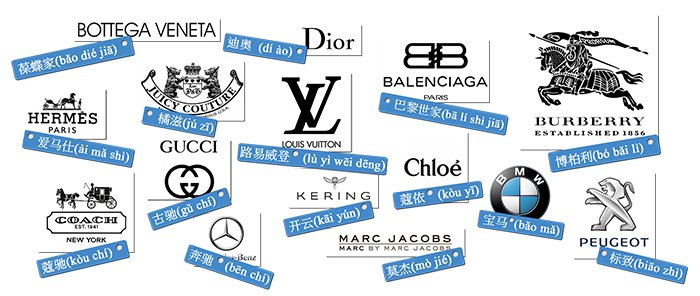Nimbility: How to get your trademarks right in China
Link to original article
Understanding intellectual property laws is not high on the average wine professional’s wish list, but if you want to do business in China and have any chance of success then it is absolutely paramount that you are 100% on top of your IP and trademarks for each of your brands. If you are not then you could be in for a whole lot of trouble. That’s the on-the-ground advice from Nimbility, the specialist marketing and trade agency that works with leading wine and spirits producers in distributing and promoting their products across China and the main Asian markets and making sure they are set up legally and have all their IP under control.
Here is Nimbility’s five-step guide to helping any brand owner protect its IP and Trademarks in China.
When Nimbility takes on new clients one of the first questions we always ask is whether they have their IP protected for mainland China. It’s amazing how many of them do not. It’s even more amazing how many think they do but actually do not. If you want to sell your products in China, this is an essential pre-market entry step to take, for multiple reasons. Many serious buyers in China, e.g. professional importers, international hotel chains, major retailers, will require a China-issued trademark certificate as a condition of sale. Unscrupulous trading companies or other actors may attempt to register your IP in advance of you and then attempt to sell it back to you.
The trademark system in China is very different to other countries as it operates on a “first to file” system as opposed to “first to use”. This system means that the first person to file the trademark is its rightful owner. Once someone else owns a trademark, they can legally stop you from using it or compel you to pay royalties for use of their trademark.
You need to find a brand name that is going to work in China as well as your traditional western brand name
This “first to file” system is the main reason why so many Western brands have issues surrounding their IP in China. “Trademark squatters”, those who own, but don’t necessarily truly use their trademarks, are prevalent. It is not uncommon for certain unscrupulous import companies to register the trademarks of the brands they are importing, often unbeknownst to the brand owners.
In some extreme cases, bad actor distributors in China have actually registered a producer’s trademark, while they are distributing the brand, and then later successfully litigated a legal claim for abuse of “their” trademark against that very same producer.
Have to be first
If foreign companies want protection in China, they must be the first to register their trademarks, ideally doing this in advance of starting business in the territory. The reality, however, is that many fail to do this, and often discover further down the track, that their trademarks are in fact owned by someone else. Or that a similar mark has been registered, precluding their ability to register their own mark. Or even that their brand name is, for some reason, unregisterable in China. Navigating around these complications is time consuming and costly, thus it is far better to take active steps to avoid these situations in the first place.
In addition to protecting your original IP, usually any proprietory names and logos, creating a strong Chinese name is another essential step towards successful branding in China. To do this right takes both effort and specific expertise. It is therefore generally recommended to work with an agency to create a well-suited and strong Chinese brand name. This step is not optional – whether you like it or not, the mandatory Chinese back label for your product will have a Chinese name for your brand, so it is vastly better that you define and choose that name and that you protect the trademark.
It is important to note that there is not one single translation of your Latin or original brand name in Chinese, there will be many variations and options based on phonetics, the literal meaning of the name, or part of your brand story. You then have to find characters that are registerable as many character combinations are already trademarked and thus cannot be registered with the China Trademark Office. This can take a number of attempts and iterations and is by no means an easy process, however, it pays off to invest and do it right as this will be the name by which Chinese consumers come to recognise and know your brand.
Penfolds spent years fighting a trademark battle in China
Strong and protected Chinese brand names have been essential components for the success of many major imported brands in China including Château Lafite, Penfolds, and Casillero del Diablo, although there are cautionary tales amongst them as well.
The following is a simple, step-by-step guide to help you with protecting your IP and Trademarks in China.
Step 1: Is your trademark available?
The China Trademark Office provides a free online search tool at CNIPA official website where you can quickly check if your brand is registered in category 33 (wine and other alcohols) or 32 for beer. If you already have one, also check whether your Chinese name is registered. If you don’t, the creation and subsequent registration of a strong Chinese brand name should be considered as a key part of your overall branding and IP protection process in China.
Tip: check not only whether your exact brand name has been registered, but also for similar brand names that could potentially hamper successful registration. For wines and spirits you should also check your brand name in class 32 (class for beer, soft drinks, etc) as they are similar categories, and vice versa.
You need specialist advice to get trademark and IP rules correct
Upon checking, you will be faced with the following options:
a) The trademark is available to file
You are lucky, and would be strongly advised to register your brand as soon as possible (registering a new trademark takes at least a year), preferably using a local trademark lawyer whose fees will be significantly lower than using an international law firm.
b) The trademark has already been registered and (unfortunately) is actively being used to sell a product under that name
It is unlikely, if the mark is being well used, that you will ever be able to register your trademark. If you really want to keep the same brand name in China you can try making an offer to the owner of the trademark. This should be done anonymously and will usually incur very high costs. Your only alternative, if you are unable to buy back the trademark, is to rebrand for the Chinese market.
c) The trademark has already been registered but is not in use
If the trademark has been registered but there is no obvious signs that it is actively being used, you may be able to file against the owner for non-use. Again, the process is a long one (12-18 months) and can be tricky to navigate. Working with a good local lawyer is advised, as well as filing the case anonymously. Once the trademark is free to file again, you can apply to register.
China far outstrips the world with trademark agreements
d) The trademark can’t be registered
According to China trademark register policy, no names can be registered which include country/city name, for example, or famous individuals. If this applies to your brand, or for some reason your trademark can’t be registered, then you may need to consider a new brand name for your product in China market.
Since November 1, 2019, China has a new Trademark Law that seeks to combat this trademark squatting. This law was introduced to prevent trademark squatting with bad intentions. The new trademark law now states that persons and companies are not allowed to register trademarks in bad faith when they do not intend to actually use the trademark.
The trademark office in China must now check this per trademark application. Even if the trademark office doesn’t discover any bad faith, there is the opportunity for anyone to file an opposition against the trademark to be registered during the three months after it has been published.
Even after this time, an invalidation can still be filed by an interested party concerned, on the basis of bad faith and the intention to not actually use the mark. In short, it will become easier for companies to get their trademark back in China if it has already been registered by someone else but is not being used in the right way.
In conclusion, this new Trademark Law makes it easier for companies to get back trademarks registered in bad faith which is a big step forward!
Step 2: Who should take care of the registration?
You can handle the registration process yourself directly with your own lawyers, or alternatively, find an agency which offers this as a service. When contemplating exporting your products to China, you should always avoid having a third party, such as your importer, registering your trademarks on your behalf. This will ensure the marks are legally registered in your name and not theirs. If an importer owns your trademark, they effectively own your brand and you will lose all rights to that trademark. The importer could even begin importing other wines from your origin or even other countries under your brand name, because they own the IP. Engaging an experienced company who works with experienced Chinese trademark lawyers to register your brand, in both English and Chinese, is generally recommended.
Tip: it is recommended to ask your lawyer handling the registration to run an initial risk analysis before submitting a TM registration to the CNIPA. While a low risk assessment still can’t 100% guarantee that a TM will be accepted, it does give a higher degree of security that your investment will be well spent.
You have to be watertight with trademarks and IP to operate in China, says Nimbility
Step 3: What should you register?
Anything that you consider to be part of your IP. This will, at a minimum, include your brand names, both English and Chinese, and likely also your logo, potentially any specific design e.g. special bottle design. It should also include any sub-brands and proprietary marks, again, both English and Chinese. The importance of creating and registering a strong Chinese name is almost as important in China as registering the English name as this is the name by which your brand will become known amongst the majority of Chinese speakers.
Step 4: What category should you register in?
China divides trademark goods and services into 45 classes and further subclasses. A trade mark gives exclusive rights only in connection with the registered goods or services. For example, a trade mark registration for wine (which falls into class 33) would not provide protection for bar services (which falls in class 43). Consider registering defensively with respect to any goods or services you want to prevent others from using. A trade mark is registered for 10 years from the registration date, and can be renewed indefinitely. However a trade mark is vulnerable to cancellation for non-use if it is not used for a period of three years from registration.
Step 5: Where should you register?
Mainland China, Hong Kong, Macau and Taiwan all have separate legal systems thus protection in each territory requires separate registration. The “first to file” system in Mainland China, however, makes registering your IP here a definite priority.
In summary, protecting your IP is a vital step towards successful brand and market building in Mainland China. Brands who spend the time and resources to invest in this process from the outset will be well rewarded when it comes to selling their products in this complex yet high potential market.





